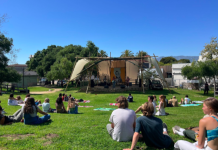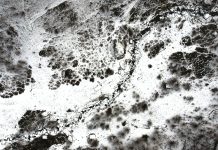Adam Rubin
Four United Kingdom scientists have published a paper detailing a way to turn energy into matter, bringing an 80-year thought experiment back to the lab. Researchers Oliver Pike, Felix Mackenroth, Edward Hill, and Steve Rose hope to formally begin experiments within the year.
The execution is new, but the idea is not. In 1934, Gregory Breit and John A. Wheeler conceptualized the idea: theoretically, one could create particles with matter by sending photons (massless particles of light) through a strong enough electromagnetic field. This would be the simplest way to show Einstein’s famous equation. Without any way to prepare gamma rays capable of this effect, however, they never went further than the thought experiment.
This new proposal uses modern fusion technology to circumvent the problem. A golden cylinder with a vacuum inside–called a hohlraum, German for ‘hollow space’–houses X-rays that can reach temperatures of the sun. Scientists plan to shoot a fine beam of photons into this cloud, hoping the two groups of photons will interact enough that there will be measurable particles coming out of the other end. If the experiment goes as planned, they will see electrons and positrons (which are electron’s antimatter opposite), and will have effectively created matter from energy.
The experiment has in the past been run with two electron beams colliding together to make energy. In 1997, Stanford scientists at the SLAC National Accelerator Laboratory were able to use electrons to make high-energy photons, which then collided enough to make the electron-positron pairs expected. This 2014 proposal is the first that doesn’t use electrons to make electrons; in a sense, this is a purer experiment, as the interaction of energy into matter has never been directly observed in a laboratory.
“The reason this is very hard to see in the lab is that you need to throw an awful lot of photons together–because the probability of any two of them interconverting is very low,” Rose explained to BBC News.
This is ultimately more of a technology experiment than a physics one,” said Banjamon Monreal, an assistant professor in University of California, Santa Barbara’s High Energy Experimental Physics area. “I mean, there’s no new physics being done. It’s essentially a cute application of already existing technology.”
When asked why news articles were so intent on presenting this finding as a “race to discovery,” Monreal replied, “Well, there’s labs in France and Rochester and Livermore that are all essentially competing to be the best laser lab. So there’s a bit of a race in getting to be the first to discover the procedure, and then actually carry it out.”
As with all funded research, Monreal said there are multiple reasons for an experiment to happen. One teammate may like the future fusion applications, another may especially enjoy work with lasers. For Monreal, the most interesting aspect is the potential knowledge we’ll gain about plasma wakefield accelerators, the part that can get these photon beams to a high enough speed to be useful.
“More effective accelerators,” said Monreal, “could eventually allow us to fit large experiments like CERN into a space on our own campus. To me, that has the most powerful potential to change the world.”
















